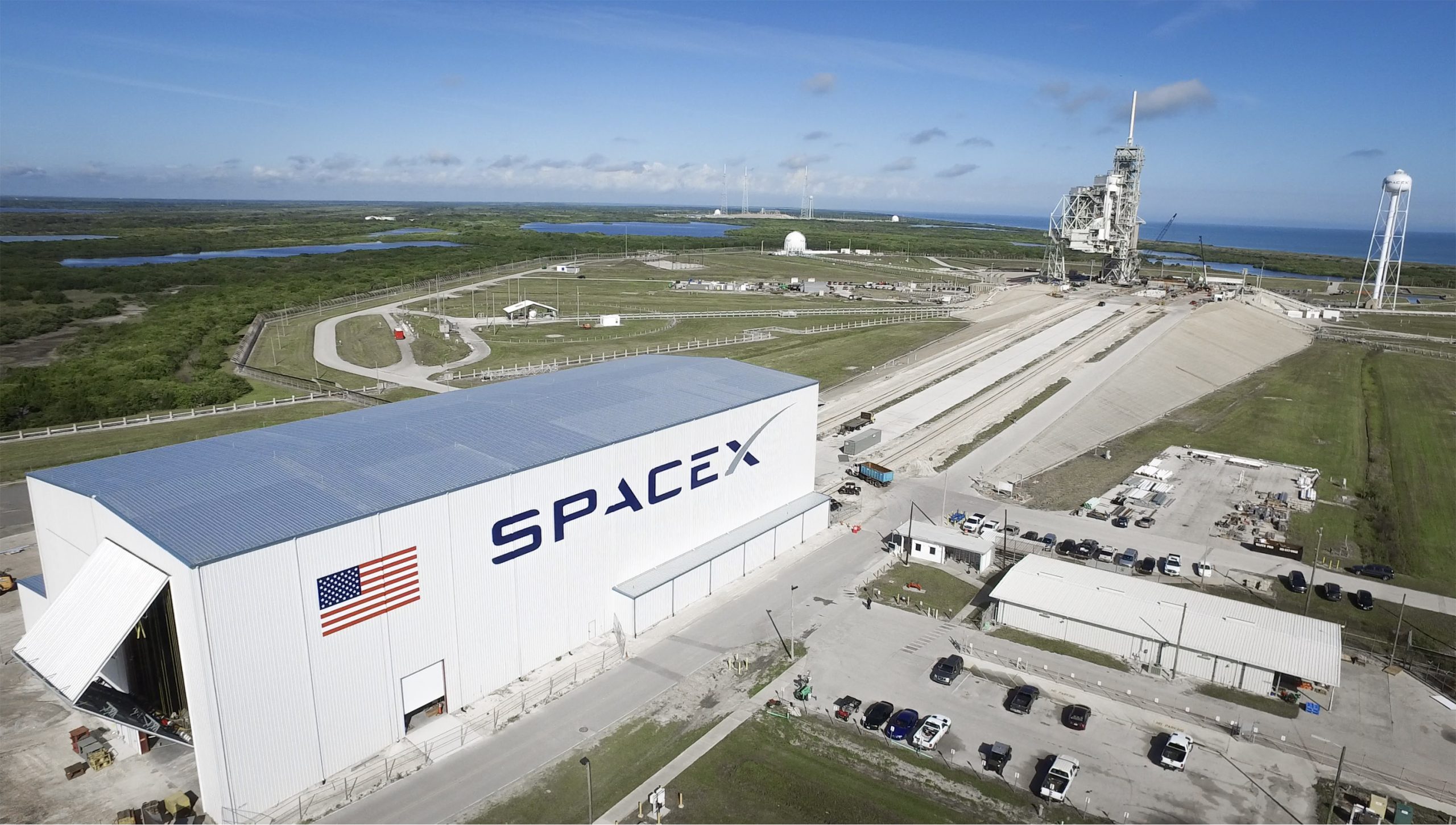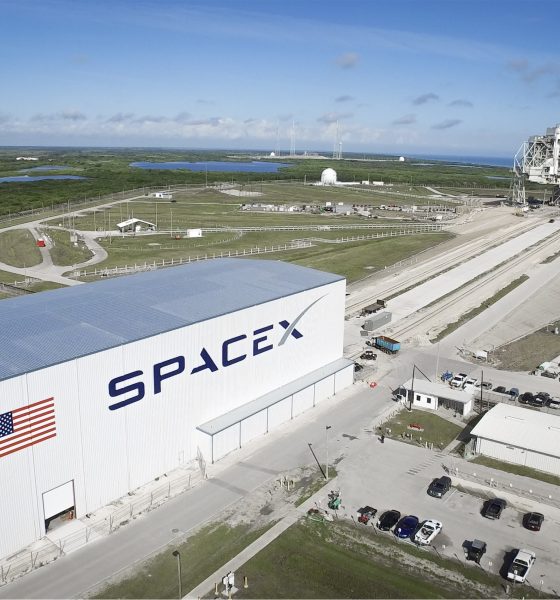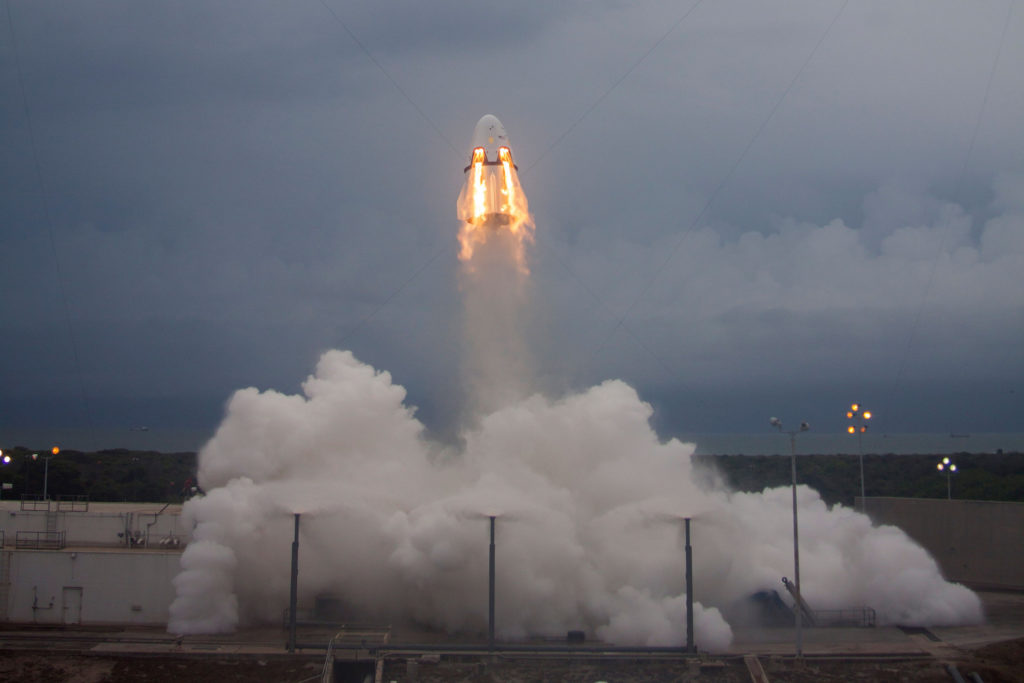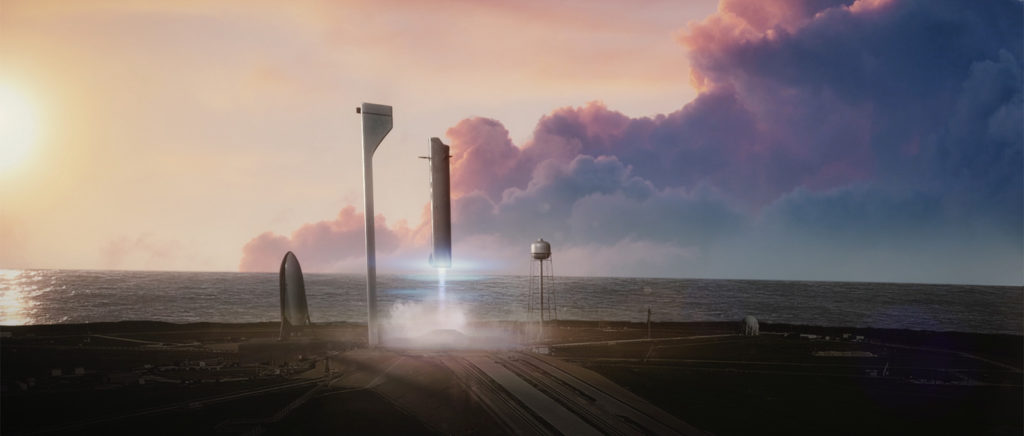

News
SpaceX had a big year: 2016 year in review
On December 21, 2016, SpaceX celebrated the one-year anniversary of Falcon 9’s first ever successful stage one landing, leaving their mark on history with the first rocket to ever do so after delivering a payload into orbit. The mission delivered 11 ORBCOMM satellites into low-Earth orbit to complete a 17-satellite constellation network.
Several videos were published with footage of the event last year, but National Geographic gave us a behind-the-scenes look at Elon Musk’s emotional ride while it was happening as an anniversary treat.
The first landing anniversary wasn’t the only thing to come out of 2016, however, and what a year it was!
MORE HISTORIC SPACEX LANDINGS
On April 8, 2016, SpaceX made history again, that time by landing Falcon 9’s first stage booster onto the “Of Course I Still Love You” autonomous droneship in the Atlantic Ocean off the Florida coast. The mission’s payload was a Dragon capsule cargo shipment to the International Space Station (“ISS”) named CRS-8, itself containing an important space technology demonstration for expandable habitats. The Bigelow Expandable Activity Module (“BEAM”) carried in the Dragon capsule was later successfully docked to the ISS and inflated as planned.
On May 5, 2016, SpaceX landed yet another first stage booster on drone ship “Of Course I Still Love You”, but the destination of its payload was geostationary transfer orbit (“GTO”), about 36,000 kilometers above the Earth vs. the 160 to 2000 kilometer height of low-Earth orbit previously achieved before a landing. The higher GTO orbit brought the first stage of Falcon 9 to a much faster speed and higher reentry heating than the previous missions, making the successful landing yet another one for the history books. Its payload was the JCSAT-14 commercial communications satellite.
Another successful GTO mission with a droneship landing was completed on May 27, 2016, and its THAICOM-8 payload was then delivered to a supersynchronous transfer orbit of 91,000 kilometers high. The third time broke the charm, however, and on June 15, 2016, after a successful insertion of Eutelsat 117 West B and ABS-2A satellites into GTO, the Falcon 9 first stage was lost due to early engine shutdown from lack of fuel.
Looks like early liquid oxygen depletion caused engine shutdown just above the deck pic.twitter.com/Sa6uCkpknY
— Elon Musk (@elonmusk) June 17, 2016
Undeterred, SpaceX successfully landed one more booster on August 16, 2016 during its JCSAT-16 mission to GTO. “Of Course I Still Love You” was the droneship used once again.
First stage landing confirmed on the droneship. Second stage & JCSAT-16 continuing to orbit https://t.co/tdni5406Hi pic.twitter.com/h6llIXSVu7
— SpaceX (@SpaceX) August 14, 2016
A FEW SETBACKS FOR SPACEX
September 1, 2016 is a day that will potentially live in both conspiratorial and procedural dispute infamy due to SpaceX’s launch pad anomaly during its fueling process. Whether the description of choice of the event is “fast fire”, “explosion”, or “fireball”, the result was the same: a complete loss of the Falcon 9 rocket, its payload, and the ability to use Space Launch Complex 40 in the near future.
Still working on the Falcon fireball investigation. Turning out to be the most difficult and complex failure we have ever had in 14 years.
— Elon Musk (@elonmusk) September 9, 2016
The AMOS-6 satellite aboard the rocket was owned by Israel-based Spacecom Ltd. and had been part of a $95 million dollar leasing deal between Facebook and Eutelsat to provide internet access to the non-connected parts of the world.
Per SpaceX’s last update, the investigation and FAA report on the anomaly are still pending and have focused on a breach in the loading of the cryogenic helium system of the 2nd stage liquid oxygen (“LOX”) tank.
Loss of Falcon vehicle today during propellant fill operation. Originated around upper stage oxygen tank. Cause still unknown. More soon.
— Elon Musk (@elonmusk) September 1, 2016
Falcon 9 isn’t expected to return to flight until January 2017 now that the launch with the Iridium-1 satellite payload was delayed from the tentative December 16th date. The FAA report must be completed prior to further launch approvals. The chain reaction of delayed launches has only cost the loss of one SpaceX customer to another launch provider thus far.
Due to extensive damage to Space Launch Complex 40 from the anomaly, future launches from the east coast will take place from historic Apollo-era Launch Complex 39A. SpaceX has been renovating the pad for Falcon Heavy launches. Also resulting from the anomaly was a delay in the first Falcon Heavy launch to early 2017.
SPACEX PUSHES ONWARD
Throughout 2016, SpaceX continued to work on its Crew Dragon capsule as part of its competition with Boeing to provide human flight capabilities from American soil via NASA’s Commercial Crew Program. The tentative test launch date for the capsule was set for late 2017, but unfortunately, it was pushed back into May of 2018. Earlier in the year, Boeing also delayed its launch date to August 2018.
ELON MUSK REVEALS SPACEX’S MARS PLAN
Finally, at the end of September, Elon announced SpaceX’s plan to put a million people on Mars by the 2060s via its Interplanetary Transport System, also affectionately named BFR (“Big F*ing Rocket”).
Full Interplanetary Tranport System presentation in ~30 mins. Simulation preview: https://t.co/lKAxabzfKX
— Elon Musk (@elonmusk) September 27, 2016
A video was released prior to the September 27th, 2016 International Astronautical Conference announcement in Guadalajara, Mexico illustrating the full system concept. The animation was based on the actual CAD renderings in development, per Elon’s talk.
Plenty of goodies were revealed about SpaceX’s plans including the passenger habitat, entertainment intentions for travelers, and technical specifications surrounding the system’s size, engines, and fuel systems. While the presentation itself was exciting, many questions were still left unanswered such as more specifics on radiation dangers and the long-term effects of microgravity.
SUMMARY
Overall, 2016 brought a rollercoaster of successes and setbacks for SpaceX, but the business of rocket launching wasn’t expected to be an easy one. The phrase, “Rockets are hard” isn’t a simple excuse to explain away failures, but rather an accepted cost of being in the field.
Throughout the year, SpaceX has managed to maintain public and government faith in its mission to advance human space exploration despite any setbacks. In July, NASA ordered a second commercial crew mission from the company, and then they followed up in November with a contract to launch an Earth surface-water-analyzing satellite in 2021.
SpaceX also received a number of recognitions for its work environment and achievements, including making Glassdoor’s Top 50 Places to Work and being awarded the 2016 World Technology Award for space.
Oh, and if it seems all that isn’t enough for SpaceX to have on its plate, in November the company filed a request with the FCC to launch over 4,000 communication satellites as part of their goal of building a hi-speed satellite internet constellation.
There’s a lot to look forward to in 2017 and beyond. Onwards!

Elon Musk
Elon Musk’s X will start using a Tesla-like software update strategy
The initiative seems designed to accelerate updates to the social media platform, while maintaining maximum transparency.

Elon Musk’s social media platform X will adopt a Tesla-esque approach to software updates for its algorithm.
The initiative seems designed to accelerate updates to the social media platform, while maintaining maximum transparency.
X’s updates to its updates
As per Musk in a post on X, the social media company will be making a new algorithm to determine what organic and advertising posts are recommended to users. These updates would then be repeated every four weeks.
“We will make the new 𝕏 algorithm, including all code used to determine what organic and advertising posts are recommended to users, open source in 7 days. This will be repeated every 4 weeks, with comprehensive developer notes, to help you understand what changed,” Musk wrote in his post.
The initiative somewhat mirrors Tesla’s over-the-air update model, where vehicle software is regularly refined and pushed to users with detailed release notes. This should allow users to better understand the details of X’s every update and foster a healthy feedback loop for the social media platform.
xAI and X
X, formerly Twitter, has been acquired by Elon Musk’s artificial intelligence startup, xAI last year. Since then, xAI has seen a rapid rise in valuation. Following the company’s the company’s upsized $20 billion Series E funding round, estimates now suggest that xAI is worth tens about $230 to $235 billion. That’s several times larger than Tesla when Elon Musk received his controversial 2018 CEO Performance Award.
As per xAI, the Series E funding round attracted a diverse group of investors, including Valor Equity Partners, Stepstone Group, Fidelity Management & Research Company, Qatar Investment Authority, MGX, and Baron Capital Group, among others. Strategic partners NVIDIA and Cisco Investments also continued support for building the world’s largest GPU clusters.
News
Tesla FSD Supervised wins MotorTrend’s Best Driver Assistance Award
The decision marks a notable reversal for the publication from prior years, with judges citing major real-world improvements that pushed Tesla’s latest FSD software ahead of every competing ADAS system.

Tesla’s Full Self-Driving (Supervised) system has been named the best driver-assistance technology on the market, earning top honors at the 2026 MotorTrend Best Tech Awards.
The decision marks a notable reversal for the publication from prior years, with judges citing major real-world improvements that pushed Tesla’s latest FSD software ahead of every competing ADAS system. And it wasn’t even close.
MotorTrend reverses course
MotorTrend awarded Tesla FSD (Supervised) its 2026 Best Tech Driver Assistance title after extensive testing of the latest v14 software. The publication acknowledged that it had previously criticized earlier versions of FSD for erratic behavior and near-miss incidents, ultimately favoring rivals such as GM’s Super Cruise in earlier evaluations.
According to MotorTrend, the newest iteration of FSD resolved many of those shortcomings. Testers said v14 showed far smoother behavior in complex urban scenarios, including unprotected left turns, traffic circles, emergency vehicles, and dense city streets. While the system still requires constant driver supervision, judges concluded that no other advanced driver-assistance system currently matches its breadth of capability.
Unlike rival systems that rely on combinations of cameras, radar, lidar, and mapped highways, Tesla’s FSD operates using a camera-only approach and is capable of driving on city streets, rural roads, and freeways. MotorTrend stated that pure utility, the ability to handle nearly all road types, ultimately separated FSD from competitors like Ford BlueCruise, GM Super Cruise, and BMW’s Highway Assistant.
High cost and high capability
MotorTrend also addressed FSD’s pricing, which remains significantly higher than rival systems. Tesla currently charges $8,000 for a one-time purchase or $99 per month for a subscription, compared with far lower upfront and subscription costs from other automakers. The publication noted that the premium is justified given FSD’s unmatched scope and continuous software evolution.
Safety remained a central focus of the evaluation. While testers reported collision-free operation over thousands of miles, they noted ongoing concerns around FSD’s configurable driving modes, including options that allow aggressive driving and speeds beyond posted limits. MotorTrend emphasized that, like all Level 2 systems, FSD still depends on a fully attentive human driver at all times.
Despite those caveats, the publication concluded that Tesla’s rapid software progress fundamentally reshaped the competitive landscape. For drivers seeking the most capable hands-on driver-assistance system available today, MotorTrend concluded Tesla FSD (Supervised) now stands alone at the top.
News
Elon Musk’s Grokipedia surges to 5.6M articles, almost 79% of English Wikipedia
The explosive growth marks a major milestone for the AI-powered online encyclopedia, which was launched by Elon Musk’s xAI just months ago.

Elon Musk’s Grokipedia has grown to an impressive 5,615,201 articles as of today, closing in on 79% of the English Wikipedia’s current total of 7,119,376 articles.
The explosive growth marks a major milestone for the AI-powered online encyclopedia, which was launched by Elon Musk’s xAI just months ago. Needless to say, it would only be a matter of time before Grokipedia exceeds English Wikipedia in sheer volume.
Grokipedia’s rapid growth
xAI’s vision for Grokipedia emphasizes neutrality, while Grok’s reasoning capabilities allow for fast drafting and fact-checking. When Elon Musk announced the initiative in late September 2025, he noted that Grokipedia would be an improvement to Wikipedia because it would be designed to avoid bias.
At the time, Musk noted that Grokipedia “is a necessary step towards the xAI goal of understanding the Universe.”
Grokipedia was launched in late October, and while xAI was careful to list it only as Version 0.1 at the time, the online encyclopedia immediately earned praise. Wikipedia co-founder Larry Sanger highlighted the project’s innovative approach, noting how it leverages AI to fill knowledge gaps and enable rapid updates. Netizens also observed how Grokipedia tends to present articles in a more objective manner compared to Wikipedia, which is edited by humans.
Elon Musk’s ambitious plans
With 5,615,201 total articles, Grokipedia has now grown to almost 79% of English Wikipedia’s article base. This is incredibly quick, though Grokipedia remains text-only for now. xAI, for its part, has now updated the online encyclopedia’s iteration to v0.2.
Elon Musk has shared bold ideas for Grokipedia, including sending a record of the entire knowledge base to space as part of xAI’s mission to preserve and expand human understanding. At some point, Musk stated that Grokipedia will be renamed to Encyclopedia Galactica, and it will be sent to the cosmos.
“When Grokipedia is good enough (long way to go), we will change the name to Encyclopedia Galactica. It will be an open source distillation of all knowledge, including audio, images and video. Join xAI to help build the sci-fi version of the Library of Alexandria!” Musk wrote, adding in a later post that “Copies will be etched in stone and sent to the Moon, Mars and beyond. This time, it will not be lost.”











